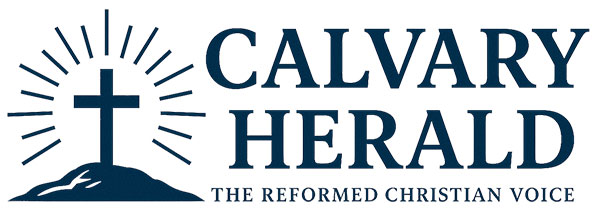In the modern era of casual worship and ever-blurring distinctions between the sacred and the secular, the sight of a pastor in a clerical collar or vestments is increasingly rare, even in historically liturgical denominations. Yet at Redeemed in Faith Reformed Church, we hold to the conviction that clergy should wear a pastoral collar and proper vestments when carrying out the sacred duties of their office. This conviction is not rooted in tradition for tradition’s sake, but in the deep theological, historical, and pastoral meaning behind these symbols. The collar and vestments are not mere garments; they are visible signs of the pastoral office, marks of service and sacrifice, and reminders to both clergy and laity of the high calling of ministry.
Historical Origins of the Clerical Collar
The clerical collar, in its current detachable form, is a relatively recent development, tracing back to the 19th century. The detachable “dog collar” was invented by Rev. Donald McLeod, a Church of Scotland (Presbyterian) minister in the 1860s. Originally white linen bands were worn as part of formal dress, but the simplified collar soon became widely adopted by clergy across Protestant denominations as a mark of the pastoral office.
Though the detachable collar is modern, the concept of clergy being visually distinct is not. Since the early Church, ordained ministers wore garments that set them apart—first because they were modeled after the Roman tunic and then, later, as specifically ecclesiastical vestments. These garments served a dual purpose: humility before God and a witness to their calling before men.
Reformed Tradition and the Role of Clerical Attire
Contrary to popular assumption, the Reformed tradition has not been uniformly hostile to clerical vesture. While certain Puritan and Radical Reformation sects rejected all vestments as remnants of Roman Catholicism, the Magisterial Reformers like John Calvin, Martin Bucer, and Peter Martyr Vermigli retained the use of ecclesiastical garments when biblically and pastorally warranted.
John Calvin and Order in Worship
John Calvin, while reforming liturgy in Geneva, insisted on the importance of reverence and order in worship. In his “Ecclesiastical Ordinances”, Calvin outlined appropriate dress for ministers, particularly for the sake of public order and ecclesiastical authority. He advocated for a plain yet distinct robe—not ornate like Roman vestments, but one that signified the pastor’s role as a servant of the Word.
“We must beware lest by our levity we obscure the majesty of God or cause His Word to be taken lightly.” – Calvin, Institutes of the Christian Religion, Book IV
Calvin’s Geneva maintained the use of the black preaching gown or Geneva gown, which later became a staple of Presbyterian and Reformed ministers. This simple robe, akin to academic dress, underscored the minister’s role as a teacher and preacher of God’s Word.
The Heidelberg and Westminster Traditions
The Heidelberg Catechism and Westminster Standards do not directly prescribe vestments, but they affirm the distinction of offices within the church (Q&A 85, Westminster Larger Catechism). The pastoral office is not self-appointed but divinely instituted, and visible markers such as clerical attire reinforce that this role is not interchangeable with that of the laity.
The Second Helvetic Confession, written by Heinrich Bullinger (a successor to Zwingli), explicitly affirms the use of ecclesiastical ceremonies and garments when used with discernment:
“If they serve to adorn and set forth the majesty of holy actions, and to help the ignorant to a better understanding of religion, we do not disallow them.” – Second Helvetic Confession, Chapter XXVII
The Pastoral Collar: A Symbol of Submission and Servanthood
The white collar, wrapped around the neck, is a sign of being “yoked” to Christ. It represents the pastor’s submission to the Lord, a reminder that he is not his own but a servant of God and His people. The collar encircles the throat as a symbol of discipline and as a public sign that the one wearing it has been set apart to speak not his own words, but the Word of God.
The color—white—signifies purity, not of the man, but of the message. It declares that the minister stands not in his own righteousness but clothed in Christ.
Moreover, the visibility of the collar acts as a public confession of the Gospel. It says to the world: “Here stands one who represents the Church, who preaches the Word, offers counsel, and is ready to serve.” It creates opportunities for witness in hospitals, prisons, homes, and public squares.
Vestments and the Sacredness of Office
When performing the duties of worship—preaching, administering sacraments, conducting weddings or funerals, ordaining elders, or pronouncing blessings—Reformed clergy traditionally donned liturgical robes or preaching gowns. These vestments are not decorative but functional: they de-emphasize the personality of the preacher and emphasize the authority of the office. Vestments remind the congregation that the pastor stands not as an entertainer or personal advisor, but as a shepherd of souls, set apart by Christ.
In our era of spiritual confusion and ecclesial casualness, the wearing of vestments reclaims reverence. It reinforces the transcendence of God and the seriousness of the church’s ministry.
Why Redeemed in Faith Reformed Church Requires the Pastoral Collar and Vestments
Redeemed in Faith Reformed Church is both Reformed and Templar-inspired in our theology and ecclesiology. We hold a high view of the pastoral office as a spiritual charge with solemn duties. Our pastors are watchmen, teachers, and shepherds. In this light:
- Wearing the pastoral collar is an act of submission to Christ’s lordship and a visual sign of the pastor’s ordination and sacred duty.
- Wearing vestments during official duties honors the biblical command to do all things “decently and in order” (1 Cor. 14:40) and acknowledges the sanctity of worship.
- It reminds the congregation that the pastor speaks not his own opinions, but the Word of the living God.
- It promotes humility by minimizing the personality of the minister and highlighting the authority of the office and Word.
- It reflects our continuity with the Magisterial Reformation, particularly with Calvin’s and Bullinger’s convictions regarding order, reverence, and the value of visible teaching.
Our standard, therefore, is clear: all ordained clergy of Redeemed in Faith Reformed Church are required to wear the pastoral collar at all times when representing the church in a ministerial capacity, and proper vestments when preaching, administering sacraments, or leading official worship services.
This is not vanity, but reverence. It is not ritualism, but discipline. And it is not clericalism, but a visible declaration of the Gospel’s call and Christ’s rule in His Church.
“I charge thee therefore before God, and the Lord Jesus Christ, who shall judge the quick and the dead at his appearing and his kingdom; Preach the word; be instant in season, out of season.” – 2 Timothy 4:1-2 (KJV)




0 Comments